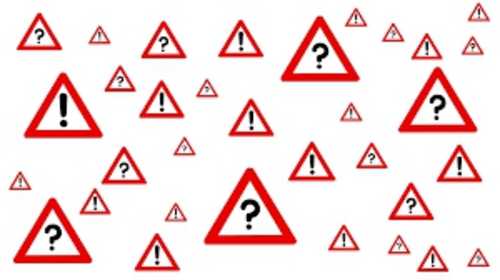Changes to the Highway Code 2022

The Highway Code which applies to England, Wales and Scotland, will be changing as of 29th January 2022 following parliamentary approval on new rules and amendments to existing rules. The Department for Transport - DFT- will be introducing eight new rules for drivers in England, Wale and Scotland to follow in updates planned to the Highway Code. The new rules aim to establish a “hierarchy of road users” in order to prioritise road users most at risk of serious collisions, such as cyclists, pedestrians and horse riders. The changes are dependent on final approval from Parliament. A total of 49 existing rules are to be updated with new amendments too.
Previously the Highway Code stated:
"The most vulnerable road users are pedestrians, particularly children, older or disabled people, cyclists, motorcyclists and horse riders. It is important that all road users are aware of The Highway Code and are considerate towards each other. This applies to pedestrians as much as to drivers and riders." Gov.uk website.
The Department of Transport have stated that the key amendments to the Highway Code will be:
Introducing a hierarchy of road users to ensure those who can do the greatest harm have the greatest responsibility to reduce the danger or threat they may pose to others.
Clarifying existing rules on pedestrian priority on pavements to advise that drivers and riders should give way to pedestrians crossing or waiting to cross the road.
Providing guidance on cyclist priority at junctions to advise drivers to give priority when travelling straight ahead.
Establishing guidance on safe passing distances and speeds when overtaking cyclists and horse riders.
If the changes are implemented, several existing rules will be updated.
Hierarchy of Road Users
The ‘Hierarchy of Road Users’ is a concept that places those road users most at risk in the event of a collision at the top of the hierarchy. The hierarchy does not remove the need for everyone to behave responsibly. The road users most likely to be injured in the event of a collision are pedestrians, cyclists, horse riders and motorcyclists, with children, older adults and disabled people being more at risk. The following H rules clarify this concept.
Rule H1
It is important that ALL road users are aware of The Highway Code, are considerate to other road users and understand their responsibility for the safety of others.
Everyone suffers when road collisions occur, whether they are physically injured or not. But those in charge of vehicles that can cause the greatest harm in the event of a collision bear the greatest responsibility to take care and reduce the danger they pose to others.
This principle applies most strongly to drivers of large goods and passenger vehicles, vans/minibuses, cars/taxis and motorcycles.
Cyclists, horse riders and drivers of horse drawn vehicles likewise have a responsibility to reduce danger to pedestrians.
None of this detracts from the responsibility of ALL road users, including pedestrians, cyclists and horse riders, to have regard for their own and other road users’ safety.
Always remember that the people you encounter may have impaired sight, hearing or mobility and that this may not be obvious.
Rule H2 - Rule for drivers, motorcyclists, horse drawn vehicles, horse riders and cyclists
At a junction you should give way to pedestrians crossing or waiting to cross a road into which or from which you are turning.
You MUST give way to pedestrians on a zebra crossing, and to pedestrians and cyclists on a parallel crossing (see Rule 195).
Pedestrians have priority when on a zebra crossing, on a parallel crossing or at light controlled crossings when they have a green signal.
You should give way to pedestrians waiting to cross a zebra crossing, and to pedestrians and cyclists waiting to cross a parallel crossing.
Horse riders should also give way to pedestrians on a zebra crossing, and to pedestrians and cyclists on a parallel crossing.
Cyclists should give way to pedestrians on shared use cycle tracks and to horse riders on Bridleways.
Only pedestrians may use the pavement. Pedestrians include wheelchair and mobility scooter users.
Pedestrians may use any part of the road and use cycle tracks as well as the pavement, unless there are signs prohibiting pedestrians.
Rule H3 - Rule for drivers and motorcyclists
You should not cut across cyclists, horse riders or horse drawn vehicles going ahead when you are turning into or out of a junction or changing direction or lane, just as you would not turn across the path of another motor vehicle.
This applies whether they are using a cycle lane, a cycle track, or riding ahead on the road and you should give way to them.
Do not turn at a junction if to do so would cause the cyclist, horse rider or horse drawn vehicle going straight ahead to stop or swerve.
You should stop and wait for a safe gap in the flow of cyclists if necessary. This includes when cyclists are:
• approaching, passing or moving off from a junction
• moving past or waiting alongside stationary or slow-moving traffic
• travelling around a roundabout
Rule 63 - Sharing space with pedestrians, horse riders and horse drawn vehicles.
When riding in places where sharing with pedestrians, horse riders or horse drawn vehicles is permitted, take care when passing pedestrians and horse riders, especially children, older adults or disabled people.
Slow down when necessary and let them know you are there; for example, by ringing your bell (it is recommended that a bell is fitted to your bike), or by calling out politely. Remember that pedestrians may be deaf, blind or partially sighted and that this may not be obvious.
Do not pass pedestrians, horse riders or horse drawn vehicles closely or at high speed, particularly from behind. You should not pass a horse on their left. Remember that horses can be startled if passed without warning. Always be prepared to slow down and stop when necessary.
Rule 72 - Road positioning.
When riding on the roads, there are two basic road positions you should adopt, depending on the situation.
Ride in the centre of your lane, to make yourself as clearly visible as possible, in the following situations:
• on quiet roads or streets – if a faster vehicle comes up behind you, move to the left to enable them to overtake, if you can do so safely
• in slower-moving traffic - when the traffic around you starts to flow more freely move over to the left if you can do so safely so that faster vehicles behind you can overtake
• at the approach to junctions or road narrowings where it would be unsafe for drivers to overtake you
When riding on busy roads, with vehicles moving faster than you, allow them to overtake where it is safe to do so whilst keeping at least 0.5 metres away, and further where it is safer, from the kerb edge. Remember that traffic on most dual carriageways moves quickly.
Take extra care crossing slip roads.
Rule 73 - Junctions.
Some junctions, particularly those with traffic lights, have special cycle facilities, including small cycle traffic lights at eye-level height, which may allow you to move or cross separately from or ahead of other traffic. Use these facilities where they make your journey safer and easier.
At junctions with no separate cyclist facilities, it is recommended that you proceed as if you were driving a motor vehicle (see Rules 170 to 190). Position yourself in the centre of your chosen lane, where you feel able to do this safely, to make yourself as visible as possible and to avoid being overtaken where this would be dangerous. If you do not feel safe to proceed in this way, you may prefer to dismount and wheel your bike across the junction.
Rule 75 - Two Stage Turns.
At some signal-controlled junctions there may be signs and markings informing cyclists to turn right in two stages:
Stage 1: When the traffic lights turn green, cyclists wishing to make the turn should go straight ahead to the location marked by a cycle symbol and turn arrow on the carriageway; then stop and wait there
Stage 2: When the traffic lights on the far side of the junction, now facing the cyclists, turn green, they should then complete the manoeuvre
Rule 76 - Going straight ahead.
If you are going straight ahead at a junction, you have priority over traffic waiting to turn into or out of the side road, unless road signs or markings indicate otherwise (see Rule H3). Check that you can proceed safely, particularly when approaching junctions on the left alongside stationary or slow-moving traffic.
Watch out for drivers intending to turn across your path. Remember the driver ahead may not be able to see you, so bear in mind your speed and position in the road.
Take great care when deciding whether it is safe to pass stationary or slow-moving lorries and other long vehicles, especially at the approach to junctions, as their drivers may not be able to see you. Remember that they may have to move over to the right before turning left, and that their rear wheels may then come very close to the kerb while turning.
Information credited to gov.uk website.
Posted by Nicola Kelly on January 25th 2022

